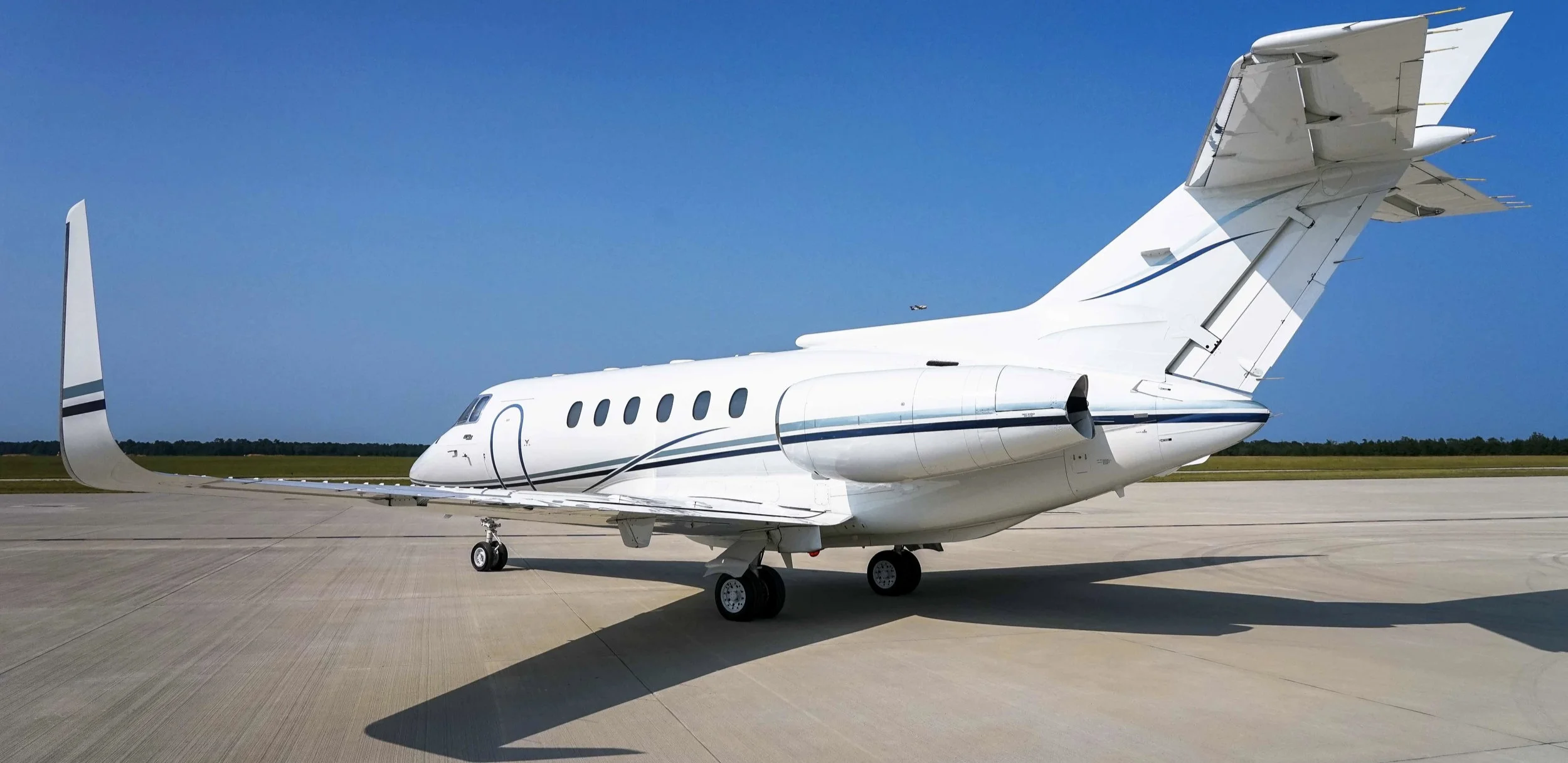
Whether your aviation experience is just taking off or a lifelong aviator Gear Up, Flight Level’s aviation blog, brings you industry insights, aircraft reviews, business aviation news, and everything flight level.
What is Appraisal Review? (and why it's important)
Appraisers provide critical valuations across every industry. What are the safeguards against erroneous reports? Who is keeping the industry in check? Let’s explore the behind-the-scenes truth of the appraisal practice and what it takes to be an appraisal reviewer.
The Credibility of an Entire Profession
Appraisers of all disciplines perform a critical role in the financing, insuring and transacting of all sorts of assets. While appraiser’s do not create value in the assets they appraise, they do form the bedrock of how entire industries understand (and perceive) their monetary worth. As such, the responsibility of an appraiser to perform their job diligently is critical; errors can be catastrophic. So who really gets to decide whether an appraisal is valid? After all, everyone has an opinion about what something should be worth. Luckily, in the United States we have the Uniform Standards of Professional Appraisal Practice (USPAP as we call it in the biz). There is a long history to the creation of USPAP that revolves around a need to standardize the methods that appraisers use in reaching value conclusions to enhance the overall credibility of valuations that the public relies upon. This standard provides a minimum construct that accredited appraisers MUST adhere to when doing effectively anything that relates to valuation services. USPAP does a great job in providing appraisers broad flexibility in how they approach individual appraisal assignments while issuing a framework for ethical and professional standards that one should uphold. Ultimately, it is the adherence and certification to the adherence of these standards that allows the public to trust the valuations they use daily. Now that there is an understanding of why all appraisals should be credible and valid, let me explain what happens when they simply, aren’t.
Appraisal Review: Structured Oversight
Just as USPAP provides structure to those writing appraisals, it also provides the standards for reviewing someone else’s appraisal assignment. This is know as Appraisal Review. Let’s say a particular asset finds itself in the middle of a legal dispute (no fault of its own), and the prosecution hires an appraiser to determine the value of said asset, in this case, let’s call it a Gulfstream G650. Maybe this appraisal is 2 pages long with little explanation of how this appraiser reached their value conclusions and it also comes out $9 million higher than an appraisal that was ordered by the bank one year prior. Reasonably, this appraisal might be called into question and a designated Appraisal Reviewer would be engaged to review the assignment. This review might be purely for verifying compliance with USPAP or it may include an opinion of value, if the reviewer is qualified to provide an aircraft appraisal. The reviewer would review the work and produce a report that explains (in heavy detail) any issues that were identified. Not only does this aid the jury in understanding how much weight to apply to that appraisal but it could result in having a misleading report removed from the case entirely.
More Training and a Higher Standard
The American Society of Appraisers (and most appraisal organizations) has a path for senior appraisers to become appraisal reviewers. In the ASA it requires completion of two 30 hour appraisal review and management courses with comprehensive exams as well as approval from a board of examiners. This allows those appraisers to review the work of other appraisers within their discipline (in my case that is “Machinery & Equipment”) for USPAP compliance or to issue an opinion about the actual value conclusions if they are equipped to do so (longer story for another day). These reviewers are called upon to continue to assure the public that the appraisal profession as a whole is not only credible but that there is oversight for instances where there may have been a shortfall. After all, entire industries depend on us.
Author:
Cameron Tipton, ASA, ARM-MTS
accredited senior appraiser
appraisal review & management - MTS
Driving Forces Behind Aircraft Retirement
Aircraft frequently outlive the manufacturer life estimates, sometimes by multiple decades. This is great news for owners and operators who are looking to stretch their investment and helps maintain lower cost options in the used marketplace. However, as some of these aircraft approach 40+ years of faithful service, the shadow of retirement grows larger. So what happens if you’re holding onto an aircraft that is ready to make its last flight? How do you know it’s time? Let’s take a look.
All Good Things Come to an End
Aircraft frequently outlive the manufacturer life estimates, sometimes by multiple decades. This is great news for owners and operators who are looking to stretch their investment and helps maintain lower cost options in the used marketplace. However, as some of these aircraft approach 40+ years of faithful service, the shadow of retirement grows larger. So what happens if you’re holding onto an aircraft that is ready to make its last flight? How do you know it’s time? Let’s take a look.
Walking a Fine-Line
The decision to retire an aircraft is not always as simple as a life-limit on the airframe, in fact, it’s usually a complex decision. There are three driving forces that drive the depreciation of an aircraft (in appraiser terms: “obsolescence”) that are worth explaining.
Physical Depreciation
This is the factor that is most obvious. As a plane ages, so do its parts. Sure, we can replace or rebuild a majority of the components, but things like the actual airframe will continue to wear down over time. Having an aircraft remain outside of the hangar for extended periods or failure to properly preserve the aircraft during inactivity can accelerate physical depreciation.
Economic Depreciation
Economic depreciation is best categorized by the loss in value by factors that are external to the aircraft. A great example is the FAA NEXTGEN requirements for 2020. For some older (but perfectly good) business jets, the cost to equip ADS-B Out by 2020 outweighs the value of the aircraft. Some older Learjet’s may have a “hull” value of $250,000 and ADS-B compliance may cost over $200,000 or there may not be an upgrade path at all.
Functional Depreciation
Functional depreciation is (basically) the loss in value of the aircraft when compared to a newer, more efficient model. A Citation II manufactured in 1980 will cost substantially more to operate than a newer Citation Bravo with more advanced components and more fuel efficient engines, therefore that value will be lower on the less desirable model.
when should you retire your plane?
It isn’t usually one single factor that forces an aircraft into retirement, but a growing number of each of these forms of depreciation until it is simply not economically viable to operate the aircraft any longer. Sure, that 40 year old biz jet may absolutely be airworthy and fly your ideal mission, but add in the growing cost of maintenance and a multi-hundred-thousand-dollar ADS-B Out solution and that value proposition quickly fades away.
Understanding the specific depreciation factors affecting your aircraft is complicated and retiring an aircraft without some advanced planning can be costly. If you own an older aircraft it’s critical that you maintain a pulse on the marketplace specific to your aircraft. Older aircraft can be a great value, but being blindsided by an expensive retirement can quickly wash away any money you saved.
If you own an older aircraft, here are 4 tips to stay ahead of the curve
Check model-specific trends quarterly. Did 10% of the fleet get retired in the last few months? That could be a sign that it’s time to sell.
Understand your maintenance schedule. Is your plane coming up on a heavy maintenance item (“D-Check”)? It might not be worth investing hundreds of thousands of dollars if the aircraft will need to be retired before the next major maintenance event.
Have a plan. Understanding your options ahead of time can save you a huge amount of heartache in the end. Do you want to be the last owner of this aircraft? Do you plan on donating this aircraft to a charity? Parting it out for salvage? Moving it to the desert? Answering these fundamental questions will help guide your ownership and will drastically improve your experience.
Talk with an accredited appraiser. Having someone in your back pocket with a constant pulse on the market is invaluable when your aircraft is near the end of its life. Appraisers are also connected with huge swaths of resources like salvage centers and museums and can provide solid unbiased guidance to help you make these tough decisions.
In the next blog, we’ll take a look at some of the uses aircraft have beyond the sky and the desert graveyards where thousands of aircraft rest untouched.
Author:
Cameron Tipton, ASA
co-founder/accredited senior appraiser
Flight level partners
You Can Buy an Airplane
Buying an airplane is a rewarding but complicated process. However, there has never been a better time to buy. From tax incentives to employee productivity private air travel is the answer to airlines travel woes. Here we explain the affordability and accessibility that comes with buying a plane.
Invest in Easy Travel
Private planes definitely have a stigma - they're EXPENSIVE. While an airplane may cost more than your car, it opens up endless possibilities for you and your business. Let's do some quick math. If you or your team use airline travel multiple times per month you are likely spending tens of thousands per year getting around the country. The hours spent commuting to and from an airport, waiting in TSA lines and delayed flights work together to hurt your bottom-line.
Price of a Plane
Prices vary widely in the aircraft market, but there are options for every budget. For many individuals and small businesses, travel is regional and a light plane is a perfect choice. Something like a used Cirrus SR22 or Beechcraft Bonanza will run between $200,000-$500,000 and offer efficient and fast travel around a 600-mile area. Annual and hourly operating costs are very reasonable.
For others, something that flies higher and faster may be necessary. A Citation Mustang or Phenom 100 are great planes to buy. These planes cost between $1-$2.5 million and offer 1,000+ mile range and speeds of an airliner. Many owners are surprised how affordable these private planes are to operate.
If these prices shock you, don't fret. There are so many ways to save on both the upfront capital and operating costs. Our group specializes in cost reduction through the use of fractional ownership, leasing, and chartering with our partners. For example, two companies may choose to team up to buy and operate the plane - reducing overall costs by half. We can even help with the matchmaking process.
Save Big on Taxes
We know what you're thinking, how can I possibly SAVE money buying an airplane. It's actually pretty easy, especially for businesses. Recent legislation has allowed for 100% first-year book depreciation for both new and used aircraft. This essentially means that you can "write-off" (deduct) the entire cost of your aircraft on your taxes the year you purchase.
Not only are you saving upfront but a huge portion of related aircraft operating expenses are deductible too. The IRS doesn't view your flight on your business aircraft differently than a ticket on the airlines. You may deduct these company trips the same way you would any other flight. This makes ownership achievable for a huge number of buyers.
Buy a Plane Today
Flight Level Partners specializes in working with first-time buyers. We take the time to educate you, our clients, on both the good and bad of ownership and build ownership strategies that make you successful. We believe that aviation continues to offer unparalleled advantages to businesses and professionals, alike. Call us or shoot us an email today to talk about how ownership can benefit you.












